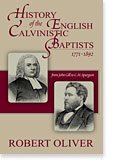Benjamin Beddome, as a Baptist minister in 18th-century England, likely lived a modest and practical life. If he owned or rode a horse, it would probably have been a type suited to the rural setting and his ministerial duties, such as travelling between churches and visiting parishioners. The horse he might have ridden would fit the following characteristics:
Likely Type of Horse
Cob or Small Draft Horse A sturdy, reliable cob or small draft horse would have been ideal for traversing uneven rural roads. These horses were known for their endurance and ease of handling.
Geldings Over Stallions Geldings (castrated male horses) were more common among non-aristocrats for being calmer and easier to manage, especially for practical use.
Not a Warhorse or Racehorse Beddome, as a clergyman, would not have had the wealth or need for a flashy racehorse or a large, powerful warhorse. Instead, his horse would have been utilitarian.
Typical Colours
Horses commonly used for clergy were often bay (brown with a black mane), chestnut, or gray - solid, respectable colours.
Breed Possibilities
Cleveland Bay Popular in England at the time, the Cleveland Bay was a versatile and durable horse, suitable for light farm work and riding.
Fell Pony or Dales Pony These smaller, hardy breeds were common in the northern and western regions of England. Their strength and calm temperament made them ideal for ministers travelling over hills and rough terrain.
Welsh Cob If Beddome had ties to regions closer to Wales, a Welsh Cob might have been his choice. Known for their stamina and versatility, they were well-suited for ministers who needed dependable transportation.
Beddome’s horse would have reflected his simple, practical lifestyle rather than any aspirations of grandeur.
Lifespan
The lifespan of a horse depends on its breed, health, workload, and care, but typically:
Lifespan of a Working Horse
Average Lifespan: 20–30 years. However, working horses like those used by 18th-century ministers would often live 15–25 years, depending on their workload and the quality of care.
Factors Affecting Longevity
Breed
Hardy breeds like cobs, Fell ponies, and Cleveland Bays are known for their durability and might last longer in working conditions.
Workload
Horses used primarily for light riding (like travelling for ministerial duties) would likely have a longer working life (10-20 years as a riding horse).
Care and Nutrition
Horses with good feed, proper hoof care, and regular rest had a longer lifespan.
In 18th-century England, the level of care would vary, but practical owners often ensured their horses were well-fed and rested to sustain their utility.
Retirement Age
A well-cared-for working horse could continue light duties into its late teens or early 20s, after which it might "retire" to pasture.
If Beddome had a horse, and it was used exclusively for ministerial travel, it could have lasted him a significant portion of his ministry, potentially 15–20 years, assuming good care and a moderate workload.
(So in around 55 years, three or four horses, say)
The death of a horse, particularly one in the 18th century, would typically result from a combination of natural aging, work-related wear, or common health issues that were difficult to treat in that era. Here are the most likely causes of death for a horse used by someone like Benjamin Beddome.
1. Natural Aging and Wear
Horses experience a decline in physical condition as they age, particularly if they have had a working life.
Arthritis or Lameness
Over time, joint issues or lameness could make the horse unable to work or graze effectively, leading to a decline in health.
Dental Issues
Worn or lost teeth could make it hard for an older horse to eat properly, leading to malnutrition.
2. Overwork or Injury
Road Injuries
Horses regularly travelling on rough or muddy roads could sustain injuries like strained tendons, sprains, or even broken legs, which in many cases would be fatal in the 18th century due to lack of treatment options.
Fatigue and Collapse
If overworked or underfed, a horse might collapse and fail to recover.
3. Disease or Infections
Colic
A common and often fatal digestive condition caused by blockages, gas buildup, or other gastrointestinal problems. Veterinary knowledge was limited, so colic could easily be a death sentence.
Laminitis
A painful and often debilitating hoof condition, especially if the horse was overfed or worked on hard terrain.
Respiratory Illnesses
Horses living in cold, damp climates were prone to conditions like pneumonia or equine influenza.
4. Lack of Veterinary Care
In the 18th century, veterinary medicine was not as advanced as today. Many conditions that are treatable now (eg infections, wounds) could have been fatal then. For example
Infections
Even a simple hoof abscess or untreated wound could lead to sepsis.
Parasites
Worms and other parasites were common and could cause long-term health issues or death if left untreated.
5. Euthanasia (or Natural Predation)
If a horse became lame or chronically ill, it might have been euthanized (though practices were not as humane as today) to prevent suffering or financial burden.
In extreme cases, the carcass could attract predators (eg dogs or wolves, depending on the area).
End of Life for a Minister’s Horse
A horse like the one Beddome might have ridden would likely die from a combination of age-related decline or a chronic condition like colic or arthritis. If the animal became unable to work or graze, it might have been euthanized to spare it prolonged suffering.











No comments:
Post a Comment